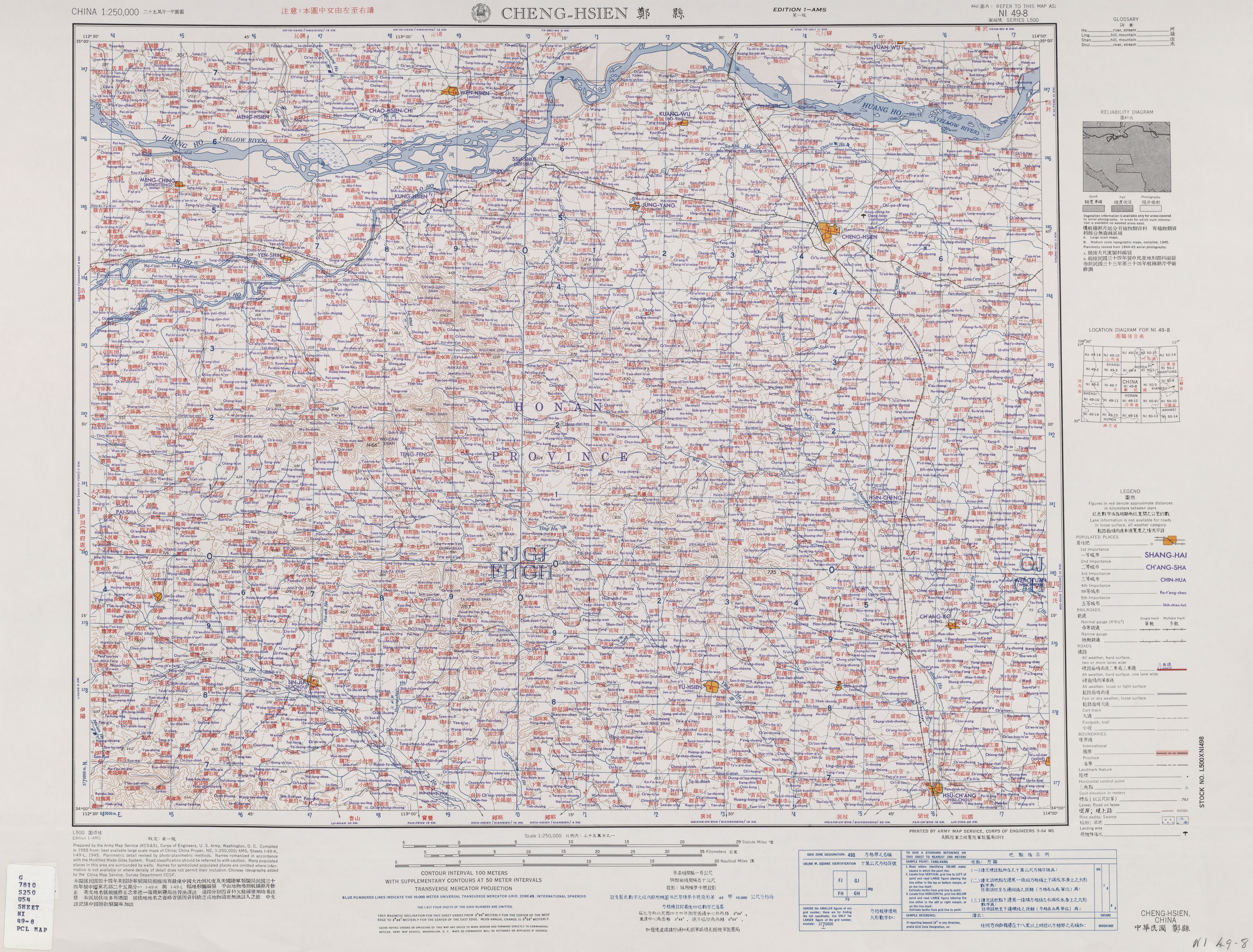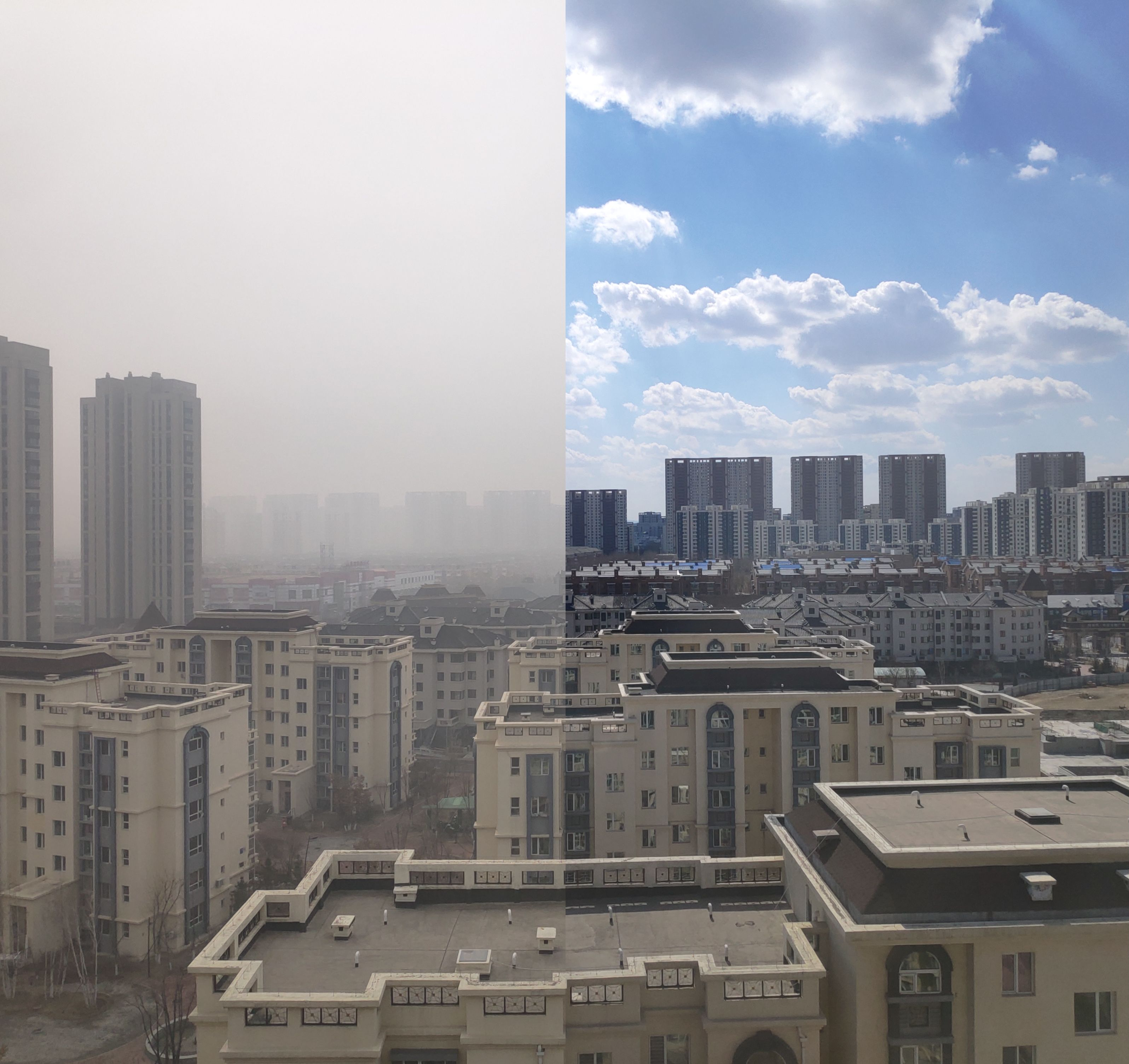|
2013 Harbin Smog
A dense wave of smog began in Northeast China, especially in major cities including Harbin, Changchun and Shenyang, as well as the surrounding Heilongjiang, Jilin, and Liaoning provinces on 20 October 2013. Unseasonably warm temperatures with very little wind across northeastern China coincided with the initiation of Northeast China's coal-powered municipal heating system. Record densities of fine particulates were measured in the city. In Harbin, the levels of PM2.5 particulate matter rose to 1,000 micrograms per cubic metre, worse than Beijing's historic highs. Visibility dropped to and authorities grounded flights and closed more than 2,000 schools. In Changchun, air pollution recorded at an all-time high and the levels of PM2.5 particulate matter rose to 845 micrograms per cubic metre on 22 October 2013. The smog eased on 25 October 2013 and had completely dissipated by the 28th due to a cold front that had moved in from Russia. Background Officials blamed the dense po ... [...More Info...] [...Related Items...] OR: [Wikipedia] [Google] [Baidu] |
Heilongjiang
Heilongjiang is a province in northeast China. It is the northernmost and easternmost province of the country and contains China's northernmost point (in Mohe City along the Amur) and easternmost point (at the confluence of the Amur and Ussuri rivers). The province is bordered by Jilin to the south and Inner Mongolia to the west. It also shares a border with Russia ( Amur Oblast, Jewish Autonomous Oblast, Khabarovsk Krai, Primorsky Krai and Zabaykalsky Krai) to the north and east. The capital and the largest city of the province is Harbin. Among Chinese provincial-level administrative divisions, Heilongjiang is the sixth-largest by total area, the 20th-most populous, and the second-poorest by GDP per capita after only Gansu province. The province takes its name from the Amur river which marks the border between the People's Republic of China and Russia. Heilongjiang has significant agricultural production, and raw materials, such as timber, oil, and coal. Etymology ... [...More Info...] [...Related Items...] OR: [Wikipedia] [Google] [Baidu] |
Taiyuan
Taiyuan; Mandarin pronunciation: (Jin Chinese, Taiyuan Jin: /tʰai˦˥ ye˩˩/) is the capital of Shanxi, China. Taiyuan is the political, economic, cultural and international exchange center of Shanxi Province. It is an industrial base focusing on energy and heavy chemicals. Throughout its long history, Taiyuan was the capital or provisional capital of many dynasties in China, hence the name ( zh, s=龙城, p=Dragon City, labels=no). As of 2021, the city governs 6 districts, 3 counties, and hosts a county-level city with a total area of 6,988 square kilometers and a permanent population of 5,390,957. Taiyuan is located roughly in the centre of Shanxi, with the Fen River flowing through the central city. Etymology and names The two Chinese characters of the city's name are (, "great") and (, "plain"), referring to the location where the Fen River leaves the mountains and enters a relatively flat plain. Throughout its long history, the city had various names, including ... [...More Info...] [...Related Items...] OR: [Wikipedia] [Google] [Baidu] |
Respiratory
The respiratory system (also respiratory apparatus, ventilatory system) is a biological system consisting of specific organs and structures used for gas exchange in animals and plants. The anatomy and physiology that make this happen varies greatly, depending on the size of the organism, the environment in which it lives and its evolutionary history. In land animals, the respiratory surface is internalized as linings of the lungs. Gas exchange in the lungs occurs in millions of small air sacs; in mammals and reptiles, these are called alveoli, and in birds, they are known as atria. These microscopic air sacs have a very rich blood supply, thus bringing the air into close contact with the blood. These air sacs communicate with the external environment via a system of airways, or hollow tubes, of which the largest is the trachea, which branches in the middle of the chest into the two main bronchi. These enter the lungs where they branch into progressively narrower secondary an ... [...More Info...] [...Related Items...] OR: [Wikipedia] [Google] [Baidu] |
Harbin Airport
Harbin Taiping International Airport is an international airport serving Harbin, the capital of Northeast China’s Heilongjiang province. The airport handled 20,431,432 passengers in 2018, making it the 20th busiest airport in mainland China. History Harbin Taiping Airport, formerly known as Yanjiagang Airport, is located about southwest of the city of Harbin and was constructed in 1979 with further expansion between 1994 and 1997 at a cost of $960 million RMB. It replaced the old Harbin Majiagou Airport (哈尔滨马家沟机场) that was originally built by the Japanese in 1931. In 1984, Taiping was upgraded to an international airport. Today it serves as an important transportation hub for the northeastern region of China and is the largest airport serving Heilongjiang province. It is capable of handling 6 million passengers annually and has more than 70 air routes, both domestic and international. Currently it has one 3200 m asphalt runway. By the flight of the Sprin ... [...More Info...] [...Related Items...] OR: [Wikipedia] [Google] [Baidu] |
North China
North China () is a list of regions of China, geographical region of the People's Republic of China, consisting of five province-level divisions of China, provincial-level administrative divisions, namely the direct-administered municipalities Beijing and Tianjin, the provinces of China, provinces Hebei and Shanxi, and the autonomous regions of China, autonomous region Inner Mongolia (although the four prefecture (China), prefectures east of the Greater Khingan Range are sometimes regarded as parts of Northeast China). Part of the larger region of Northern China (''Beifang''), it lies north of the Qinling–Huaihe Line, with its heartland in the North China Plain. Most inhabitants here speak variants of Northern Chinese languages such as Mandarin Chinese, Mandarin, which includes the Beijing dialect and its cousin variants. The Beijing dialect is largely the basis of Standard Chinese (or Standard Mandarin), the official language of the People's Republic of China. Jin Chinese an ... [...More Info...] [...Related Items...] OR: [Wikipedia] [Google] [Baidu] |
Hebei
Hebei is a Provinces of China, province in North China. It is China's List of Chinese administrative divisions by population, sixth-most populous province, with a population of over 75 million people. Shijiazhuang is the capital city. It borders Shanxi to the west, Henan to the south, Shandong and Liaoning to the east, and Inner Mongolia to the north; in addition, Hebei entirely surrounds the direct-administered municipalities of Beijing and Tianjin on land. Its population is 96% Han Chinese, 3% Manchu people, Manchu, 0.8% Hui people, Hui, and 0.3% Mongols in China, Mongol. Varieties of Chinese spoken include Jilu Mandarin, the Beijing dialect of Mandarin, and Jin Chinese. During the Spring and Autumn period, Spring and Autumn and Warring States periods (771–226 BC), the region was ruled by the states of Yan (state), Yan and Zhao (state), Zhao. During the Yuan dynasty (1271–1368), the region was called Zhongshu Sheng, Zhongshu. It was called North Zhili during the ... [...More Info...] [...Related Items...] OR: [Wikipedia] [Google] [Baidu] |
Zhengzhou
Zhengzhou is the capital of Henan, China. Located in northern Henan, it is one of the nine National central city, national central cities in China, and serves as the political, economic, technological, and educational center of the province. The Zhengzhou metropolitan area (including Zhengzhou and Kaifeng) is the core area of the Central Plains Economic Zone. The city lies on the southern bank of the Yellow River. Zhengzhou is a major hub of China's domestic and international transportation network; for example, it is connected to Europe and has an international airport. Zhengzhou is a National Civilized City and a List of National Famous Historical and Cultural Cities in China, State-list Famous Historical and Culture City. As of 2020, there are two List of World Heritage Sites in China, World Cultural Heritage Sites in Zhengzhou. The Zhengzhou Commodity Exchange (ZCE) is China's first futures exchange. Zhengzhou Airport Economy Zone is China's first Airport Economy Zone. As o ... [...More Info...] [...Related Items...] OR: [Wikipedia] [Google] [Baidu] |
Airpocalypse
Pollution in China is one aspect of the broader topic of environmental issues in China. Various forms of pollution have increased following the industrialisation of China, causing widespread environmental and health problems.Jared Diamond, '' Collapse: How Societies Choose to Fail or Succeed'', Penguin Books, 2005 and 2011 (). See chapter 12 entitled "China, Lurching Giant" (pages 258–377). Pollution statistics Soil The immense population growth in the People's Republic of China since the 1980s has resulted in increased soil pollution. The State Environmental Protection Administration believes it to be a threat to the environment, food safety and sustainable agriculture. 38,610 square miles (100,000 km2) of China's cultivated land have been polluted, with contaminated water being used to irrigate further 31.5 million square miles (21,670 km2.), and another 2 million square miles (1,300 km2) have been covered or destroyed by solid waste. The affected area accou ... [...More Info...] [...Related Items...] OR: [Wikipedia] [Google] [Baidu] |
Shijiazhuang
Shijiazhuang; Mandarin: ; formerly known as Shimen and romanized as Shihkiachwang is the capital and most populous city of China's Hebei Province. A prefecture-level city southwest of Beijing, it administers eight districts, three county-level cities and eleven counties, and is east of the Taihang Mountains, which extend over from north to south with an average elevation of . At the 2020 census, the city had a population of 11,235,086, with 6,230,709 in the built-up area comprising all urban districts except Jingxing District and Zhengding County, the twelfth largest in mainland China. Shijiazhuang experienced dramatic growth after the founding of the People's Republic of China in 1949. The population of the metropolitan area has more than quadrupled in thirty years as a result of industrialization and infrastructural developments. From 2008 to 2011, Shijiazhuang implemented a three-year plan, resulting in an increase of green areas and new buildings and roads. A railway ... [...More Info...] [...Related Items...] OR: [Wikipedia] [Google] [Baidu] |
Jinan
Jinan is the capital of the province of Shandong in East China. With a population of 9.2 million, it is one of the largest cities in Shandong in terms of population. The area of present-day Jinan has played an important role in the history of the region from the earliest beginnings of civilization and has evolved into a major national administrative, economic, and transportation hub. The city has held Sub-provincial city, sub-provincial administrative status since 1994. Jinan is often called the "City of Springs" for its famous 72 Artesian aquifer, artesian springs. Jinan is one of the top 35 cities in the world for scientific research as tracked by the Nature Index according to the Nature Index 2023 Science Cities. The city is home to List of universities and colleges in Shandong, several major universities, including Shandong University, Shandong, Shandong Normal University, Shandong Normal, Shandong Jianzhu University, Shandong Jianzhu, University of Jinan, Qilu University o ... [...More Info...] [...Related Items...] OR: [Wikipedia] [Google] [Baidu] |
Chongqing
ChongqingPostal Romanization, Previously romanized as Chungking ();. is a direct-administered municipality in Southwestern China. Chongqing is one of the four direct-administered municipalities under the State Council of the People's Republic of China, Central People's Government, along with Beijing, Shanghai, and Tianjin. It is the only directly administrated municipality located deep inland. The municipality covers a large geographical area roughly the size of Austria, which includes several disjunct urban areas in addition to Chongqing proper. Due to its classification, the municipality of Chongqing is the List of largest cities, largest city proper in the world by population, though Chongqing is not the most populous urban area. The municipality of Chongqing is the only Chinese city with a resident population of over 30 million; however, this number includes its large rural population. In 2020, Chongqing surpassed Shanghai as China's largest municipality by urban populati ... [...More Info...] [...Related Items...] OR: [Wikipedia] [Google] [Baidu] |









